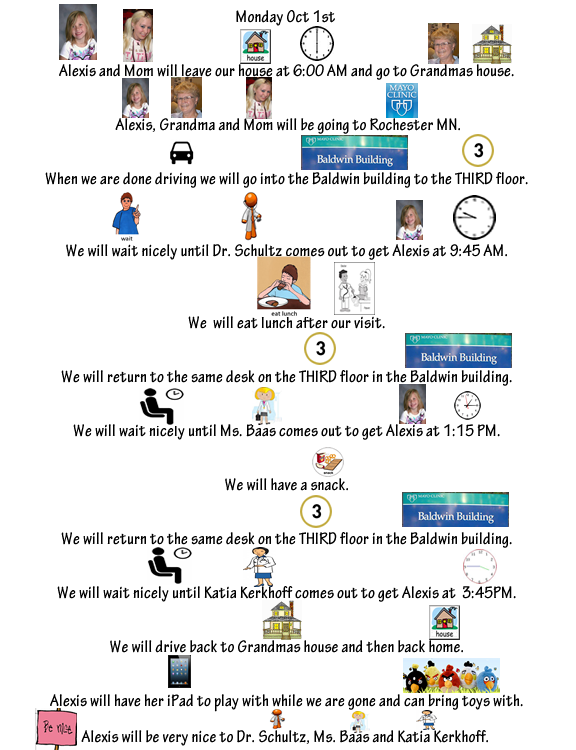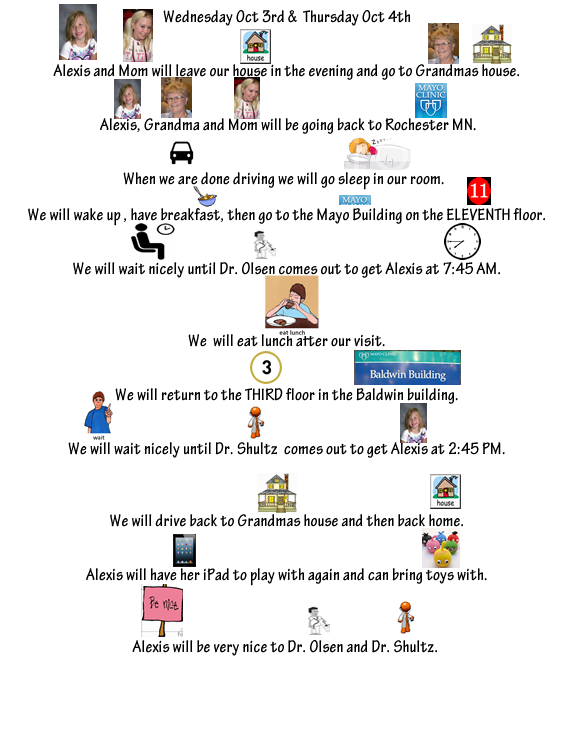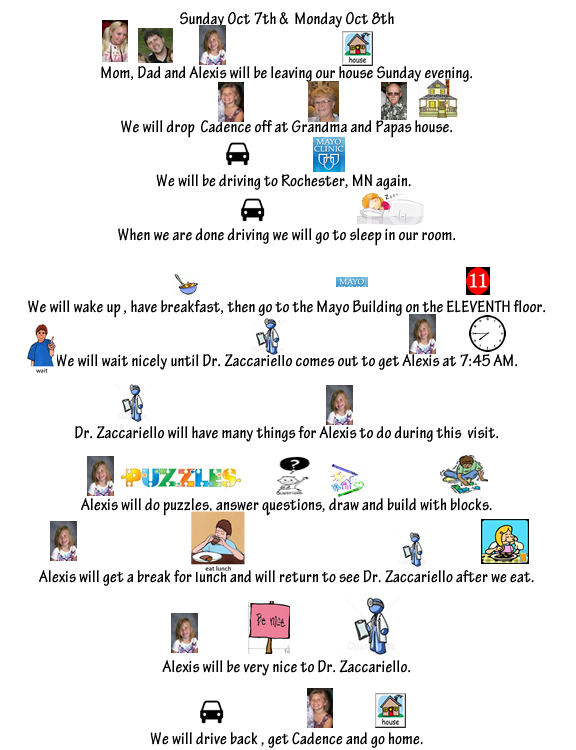I thought I would share the social stories that I created for Alexis to help her prepare for the lengthy appointments we have coming up at the Mayo Clinic early next month.
Social Stories are a great tool used to help individuals on the autism spectrum better understand the nuances of interpersonal communication so that they could interact in an effective and appropriate manner. Although the prescribed format was meant for high functioning people with basic communication skills, the format was adapted substantially to suit individuals with poor communication skills.
Social stories are being used in targeted ways to prepare individuals for social interaction and to prepare autistic individuals for public affairs.
Although Social Stories have been recommended as an effective intervention for children with ASD since the early 1990s, the research on their effectiveness is still limited. We however, find them to be very beneficial for Alexis.
There are seven sentence types that may be used in a Social Story.
Descriptive sentences: are truthful and observable sentences (opinion- and assumption-free) that identify the most relevant factors in a social situation.
Perspective sentences: refer to or describe the internal state of other people (their knowledge/thoughts, feelings, beliefs, opinions, motivation or physical condition) so that the individual can learn how others’ perceive various events.
Directive sentences: presents or suggests, in positive terms, a response or choice of responses to a situation or concept.
Affirmative sentences: enhances the meaning of statements and may express a commonly shared value or opinion. They can also stress the important points, refer to a law or rule to reassure the learner.
Control sentences: identifies personal strategies the individual will use to recall and apply information. They are written by the individual after reviewing the Social Story.
Cooperative sentences: describe what others will do to assist the individual. This helps to ensure consistent responses by a variety of people.
Partial sentences: encourages the individual to make guesses regarding the next step in a situation, the response of another individual, or his/her own response. Any of the above sentences can be written as a partial sentence with a portion of the sentence being a blank space to complete.
More information can be found here : http://livingwellwithautism.com/social_stories


